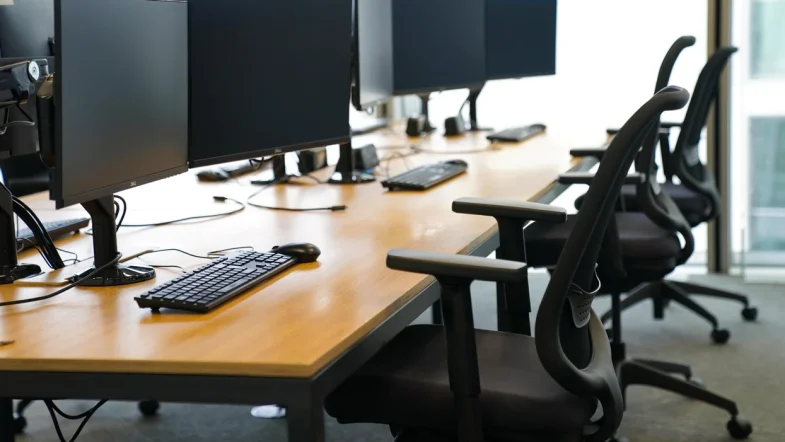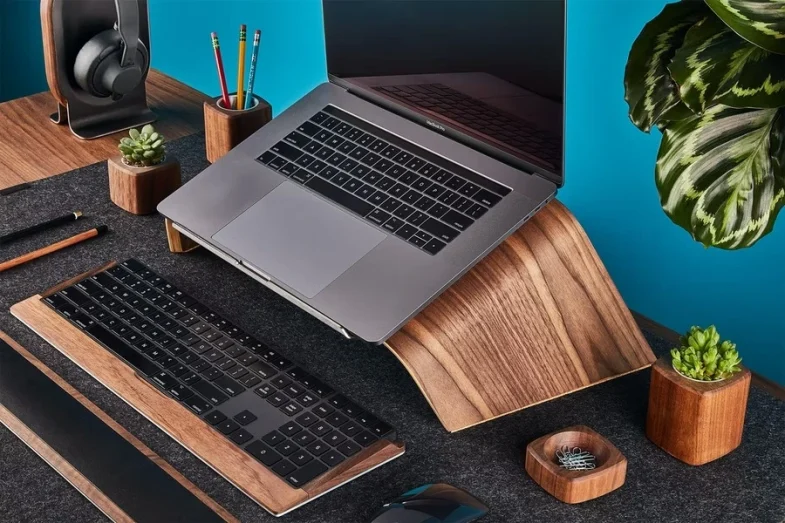Time is money. Nobody can deny that saving time at your workplace will boost the revenues of your business or company. Following this principle, the ultimate goal of modern workplaces is to use time as efficiently as possible. Over the years, automation technologies have made many tasks and processes more efficient.
So, what are the newest workspace automation trends for 2024? The Covid-19 pandemic forced many workplaces to adopt more technological solutions to enable remote work. The majority of these solutions will remain in place during the post-pandemic period. We will review some of the automation solutions for your workspace in this article.
Why Automate Your Workspace?

Source: protocol.com
Workspace automation is the use of technology to do repeatable or predictable workflow with minimal or no intervention from workers. Workspace automation solutions can be software, hardware, or a combination of both. The ultimate result of automating your workspace is productivity growth, which directly translates into more revenue.
Most workspace automation solutions for offices are software-driven. From cloud-based applications to artificial intelligence (AI), office workflows can be optimized with these solutions. However, other automation solutions are hardware-driven and do not necessarily speed up workflows. For example, many workplaces are adopting linear actuators for different devices at the office.
One of the most common applications of linear actuators in offices is in the so-called standing desks. The tabletop height of a standing desk can be adjusted with the push of a button. This way, a worker can shift between sitting and standing postures during a working day.
The same principle can be used to automate other devices. For example, TV lifts are becoming popular in offices for video conference rooms and similar facilities. If you want to know more about this application, you can consult this link: https://www.progressiveautomations.com/collections/tv-lifts.
But why automate your workspace? Couldn’t it be counterproductive? For many years, many people have believed that robots and machines could take jobs away from humans. More than half of workers worldwide believe in this notion. The reality is completely different. Automation technology helps workers to complete tasks efficiently and safely. Here are some good reasons to automate your workspace:
- More Productivity. Doing repetitive tasks at work inhibits the creativity and productivity of workers. Automation helps you to do all those tedious tasks more rapidly, giving you more time to unleash all your potential.
- Lower Costs. Besides higher productivity, workspace automation can yield cost savings. As a result, your company’s revenue will increase and monetary compensation for workers will be higher.
- Safety. As said, workspace automation helps to perform several tasks more safely. In manufacturing and other similar environments, automation helps workers to complete dangerous procedures with minimal risks.
- Less Human Error. Workers are prone to make mistakes when doing repetitive tasks. Therefore, automation yields fewer mistakes in tasks such as data entry.
As seen, workspace automation has many advantages. The sole disadvantage of automation could be that human involvement is more critical even though humans are less involved in automated systems. Hence, instead of taking jobs from workers, automation technology is changing the type of jobs needed in different industries.
Top 4 Workspace Automation Trends in 2024

Source: protocol.com
In 2024, automation is at the top of the business agenda. As a result of the Covid-19 pandemic, remote and hybrid working became the norm in most companies. This shift in work modalities prompted many businesses to adopt more automation. Many job positions were open to provide the workforce needed to implement and maintain the technology behind these automation solutions. The top workspace automation trends this year are listed below.
1. Space Usage Automation
As the Covid-19 pandemic recedes, many workers are coming back to their workplace on a hybrid modality. Hence, employers have to create a safe setup for these employees. Automation solutions can help create the correct conditions by scheduling face-to-face meetings, tracking health checks, and more. Also, employees can use software automation tools to reserve desks that ensure a safe distance between people at the workplace. The possibilities are endless.
2. Chatbots for Customer Support
To offer top customer support, a business has to answer all inquiries quickly. So, automation is the best way to meet customers’ demands in a timely manner. Many websites have already adopted chatbots with great success. This trend will surely continue in the coming years. While chatbots do not replace customer support representatives, they provide a first and quick answer to inquiries. Any business can greatly benefit from this automation solution. A chatbot prevents customers from waiting for hours on the phone. On the other hand, a chatbot can give more time to customer support personnel to organize their workload. If needed to check you can use online free background check websites.
3. Communication and Data Systems

Source: hollywoodreporter.com
Communication technologies have been decisive in workspaces during the pandemic. In 2024, these technologies continue to be critical to supporting remote work. Applications like Zoom and Google Meets have been instrumental in enabling remote and hybrid work modalities. Together with these technologies, data systems like cloud storage have also played a significant role in workspace automation.
4. Modern Office Furniture
Modern offices have been adopting automation technologies to meet the requirements of new work modalities. For instance, standing desks have become the norm in many workspaces. These pieces of furniture come in different shapes and sizes. The most remarkable feature of standing desks is the adjustable tabletop height. Office workers take more care of their health these days.
Sitting for long hours at work does not contribute to being healthy. A standing desk helps to remedy this situation by allowing office workers to stand during working hours. By pushing a button, the tabletop can be lifted or dropped as the worker deems it more convenient. Also, for remote work, video conference facilities have become a necessity in most modern offices. In such cases, automated TV lifts will come in handy.
Personalized lighting is another important aspect to create a comfortable workspace. Since every worker needs a different light level to be productive, automated lights are the best solution. These lighting systems allow workers to adjust light intensity from lamps using an app on their smartphones.
